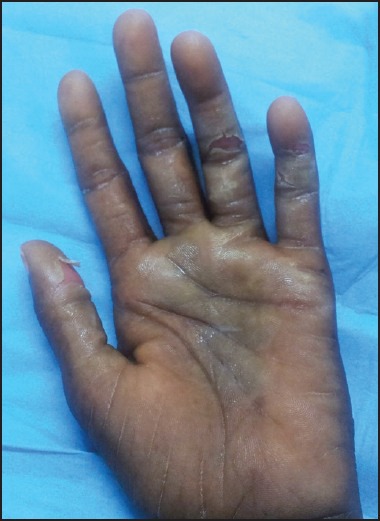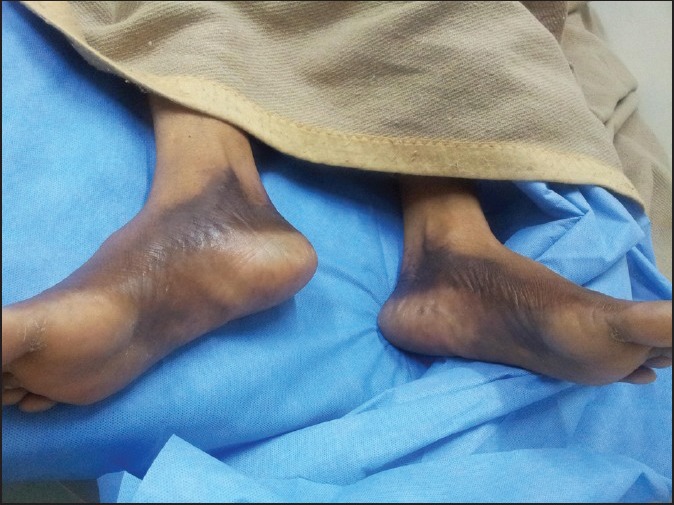Hand foot syndrome associated with standard dose cytarabine
CC BY-NC-ND 4.0 · Indian J Med Paediatr Oncol 2013; 34(04): 333
DOI: DOI: 10.4103/0971-5851.125263
Abstract
Hand-foot syndrome, is a side effect of cytotoxic chemotherapy, causes erythema, dysthesias, swelling of palms and soles and sometimes blisters. Rarely, it may ulcerate. The most commonly used drug that frequently causes this reaction is 5-fluorouracil or its prodrug oral capecitabine. High dose cytarabine is known to cause HFS. Here we report a case of HFS caused by standard dose cytarabine.
Publication History
Article published online:
19 July 2021
© 2013. Indian Society of Medical and Paediatric Oncology. This is an open access article published by Thieme under the terms of the Creative Commons Attribution-NonDerivative-NonCommercial-License, permitting copying and reproduction so long as the original work is given appropriate credit. Contents may not be used for commercial purposes, or adapted, remixed, transformed or built upon. (https://creativecommons.org/licenses/by-nc-nd/4.0/.)
Thieme Medical and Scientific Publishers Pvt. Ltd.
A-12, 2nd Floor, Sector 2, Noida-201301 UP, India
Abstract
Hand-foot syndrome, is a side effect of cytotoxic chemotherapy, causes erythema, dysthesias, swelling of palms and soles and sometimes blisters. Rarely, it may ulcerate. The most commonly used drug that frequently causes this reaction is 5-fluorouracil or its prodrug oral capecitabine. High dose cytarabine is known to cause HFS. Here we report a case of HFS caused by standard dose cytarabine.
A 28-year-old lady with an acute myeloid leukemia underwent induction chemotherapy consisting of daily intravenous infusion of cytarabine (100 mg/m2) for 7-days plus daunorubicin (75 mg/m2) for 3 days. On day 8 of therapy the patient's left palm and soles became red and painful. Later, well-demarcated erythematous plaques, bullae, and desquamation developed over her hands and feet [Figure [Figure1a1a and andb].b]. Diagnosed as cytarabine-induced palmar-plantar erythrodysesthesia (hand foot syndrome, HFS, acral erythema, or Burgdorf's reaction). She was given supportive care, topical emollient, cushioning sore skin with soft pads and pyridoxine (vitamin B6), and the acral erythema completely resolved by day 18.

| Fig. 1a Erythematous plaques, bullae, and desquamation of hand

| Fig. 1b Discoloration of feet

| Fig. 1a Erythematous plaques, bullae, and desquamation of hand

| Fig. 1b Discoloration of feet


 PDF
PDF  Views
Views  Share
Share

